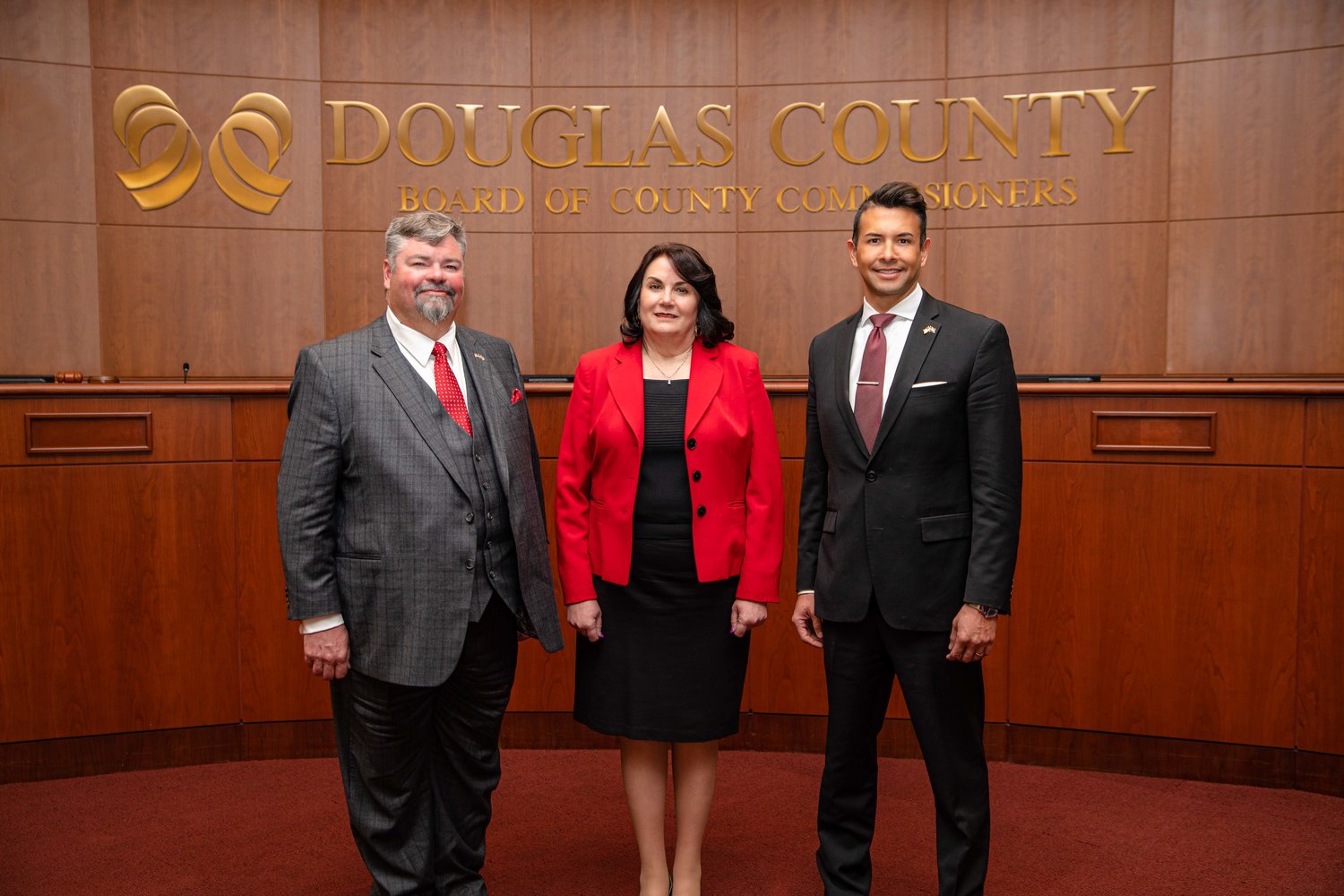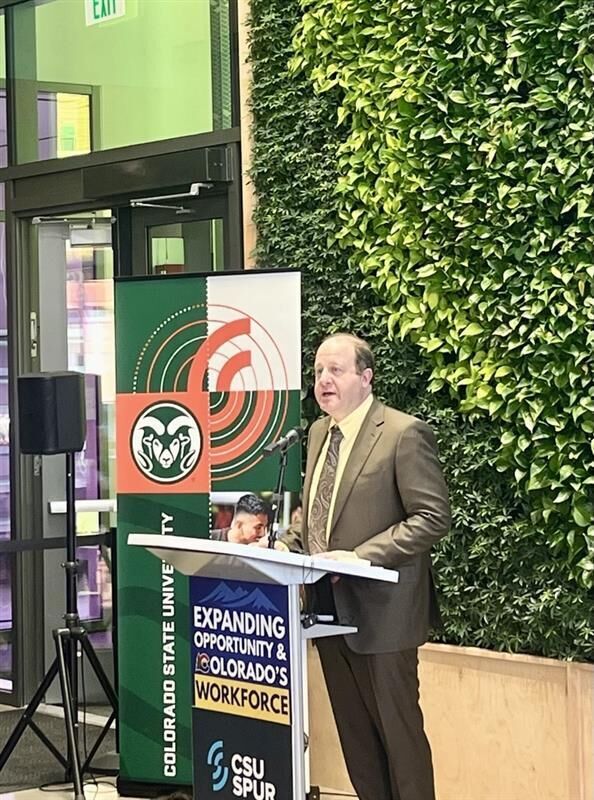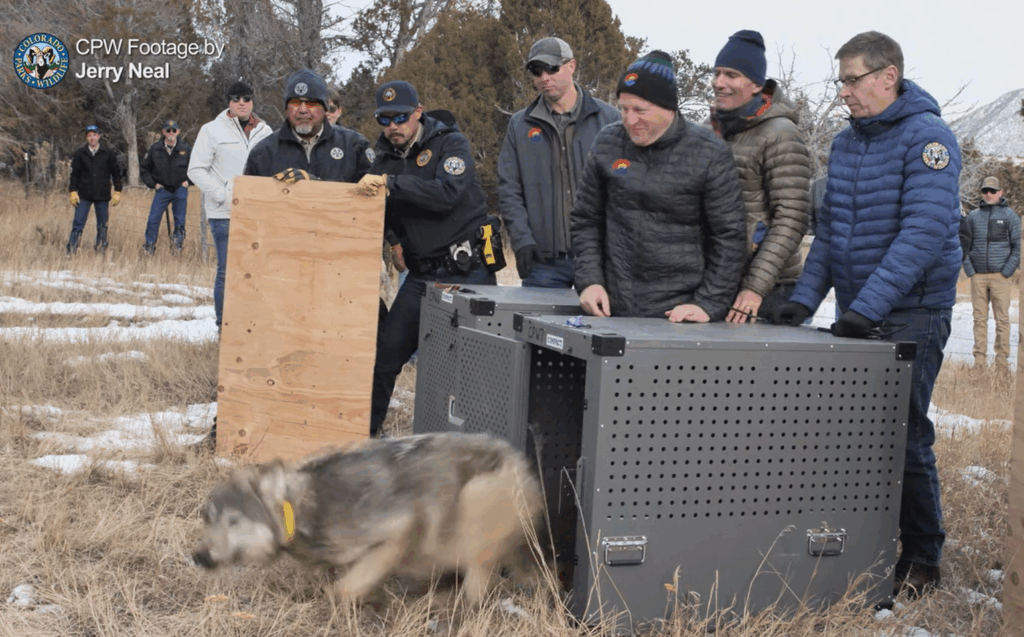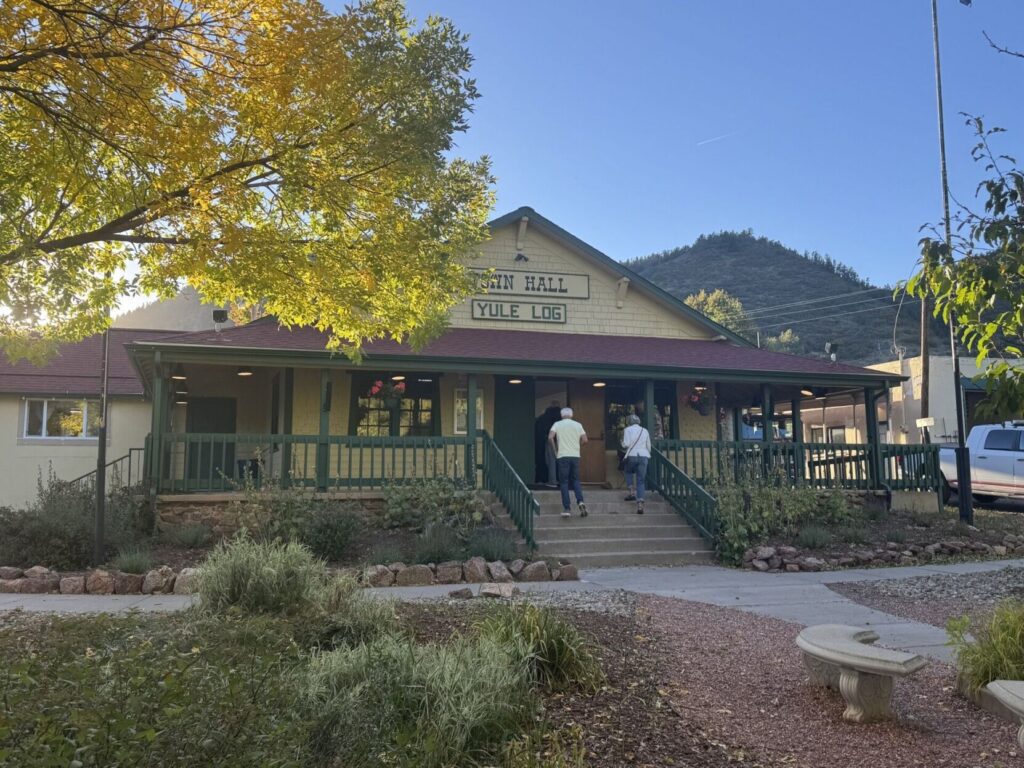DougCo Commissioner Teal proposes campaign donors for DougCo water commission
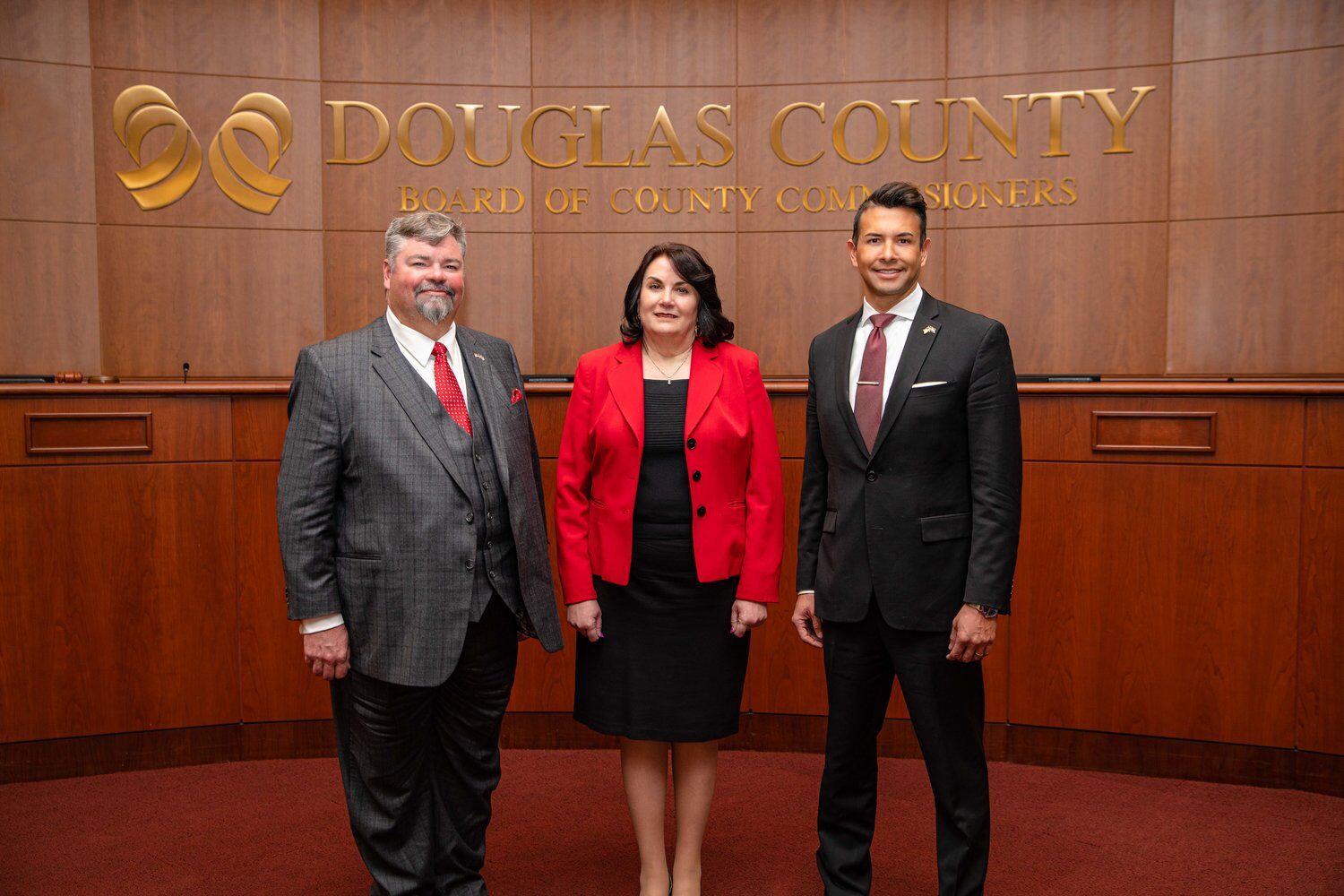
A Douglas County commissioner recommended individuals who contributed to his campaign to sit on a new water commission that would be tasked with ensuring sufficient future water supply for the county.
The individuals included two principals of a water development firm that has been trying to get buy-in for a proposal to pipe water from the San Luis Valley into Douglas County, a move that has been met with stiff opposition from governments in the valley.
Douglas County’s commissioners met earlier this week to begin deciding who they would put on the new 11-member water commission, which will include three representatives of each district and two at-large members. The nominees were among those who submitted applications for the water commission, a list that has been kept confidential.
During Monday’s discussion, Commissioner George Teal announced his eight picks for members: Three for his district, three for another district, plus two at-large members.
Five of his picks have made substantial contributions to his political campaigns, including two principals from Renewable Water Resources, the firm that pitched moving water from San Luis Valley’s groundwater to Douglas County.
Teal said his nominees have a “wealth” of experience in water issues, and suggested each commission member have an alternate, which would allow the commissioners to appoint more members, a total of 11 for the commission and 11 alternates.
On Aug. 13, 2021, Renewable Water Resources principals, their spouses and friends contributed to pay down Teal’s 2020 campaign debt. The contributions totaled $16,000. Among the funders were Tonner and John Kim, both RWR principals, and Craig Broughton, an associate of Tonner’s. All three are on Teal’s list for the water commission.
He also named Castle Pines City Councilman Roger Hudson, who is deputy chief of staff for the House Minority caucus at the state Capitol and who also made several contributions to Teal’s campaign for the 2020 election.
Teal also recommended Harold Smethills, who doesn’t live in Douglas County but owns property in Sterling Ranch. Smethills has also contributed to Teal’s campaign. In a previous discussion, Teal had proposed allowing people who don’t live in the county but own property there to apply for the water commission.
Teal did not respond to a request for comment on why so many of his nominees are his campaign contributors. But, last year, Teal said he and one of the individuals who contributed have been been friends since 2004. He said he was trying to retire campaign debt, and RWR’s principals came through, as did several other big-dollar contributors, he said. He added that those contributions will also help him as he plans to run for reelection in 2024, when he faces a rematch with a Democratic opponent who, he said, receives a lot of out-of-state contributions.
Also last year, Sean Duffy, a spokesman for RWR, confirmed the contributions but downplayed their significance: “For what it’s worth, many of the RWR team, including the principals particularly, are Douglas County residents and most have been actively involved in county politics for 15 years or more. … So, political involvement isn’t a new endeavor.”
Teal’s other nominees are former Castle Rock town council member Clark Hammelman, who Teal succeeded on that body and Dave Simonson, a member of the Highlands Ranch Metro District who is also on the Northwest Douglas County Economic Development Corporation, where he serves with Teal and Brock Smethills, Harold’s son. Simonson was elected to the Highlands Ranch board in 2022.
Teal’s final nominee is James Maras of the Perry Park Water & Sanitation District. Maras was reelected to the Perry Park board in June.
Teal said during this week’s meeting that he spoke with all of his nominees to ensure they were comfortable with their names being publicly released.
Interestingly, while Teal did not propose members for Commissioner Abe Laydon’s District 1, he suggested names for District 3, which is represented by Commissioner Lora Thomas.
Given the dynamics among the Douglas County commissioners, Teal’s move signaled that Thomas might have no say in who represents her district on the water commission.
The names Teal suggested, including campaign contributors, is a concern, Thomas told Colorado Politics. The composition of this water commission is at a crossroads. “Are we going to put individuals on this commission who have true water expertise? Or is it just about political patronage?” Thomas said she will be prepared with qualified individuals with water expertise to represent district 3, beginning with Frank Johns of Centennial Water, who she said has an incredible resume on water issues.
The Douglas County commissioners have been embroiled in a 2-1 fight, with Thomas on one side and Teal and Laydon on the other, over a myriad of issues, including the Renewable Water Resources proposal to get San Luis Valley water and move it through a 200-mile pipeline to Douglas County. The company, led by former Gov. Bill Owens and his former deputy chief of staff, Sean Tonner, had sought $20 million in American Rescue Plan Act funds as the county’s share of the project’s cost, but legal advice from the county attorneys advised against it. Estimates on the cost range from $600 million to $2 billion.
The project, which intends to tap into the San Luis Valley confined aquifer, has drawn opposition in the valley, as well as from the governor, Colorado’s two U.S. senators, Attorney General Phil Weiser, members of the Colorado General Assembly, Denver Water, Aurora Water and U.S. Rep. Lauren Boebert, R-Silt, whose district includes the valley.
The RWR project claims there’s 1 billion acre-feet of water in the confined aquifer. One acre-foot is about 326,000 gallons of water or enough to cover a football field with 1 foot of water. Water experts in the valley dispute RWR’s claim that there’s water in the aquifer that could be piped to Douglas County, pointing out that the state engineer has ordered water users in the valley to shut down groundwater wells in both the unconfined and confined (and shallow) aquifer by 2030 or the state will do it for them.
In pitching for exporting groundwater out of the valley, the RWR project guarantees the valley’s resource would be protected. It notes that the Colorado Water Court already ensures that the San Luis Valley will not lose water. RWR says it would enter the water court process and “prove how the project meets these provisions of the water court.”
The project would invest $68 million to pay farmers and ranchers who voluntarily sell water rights, maintaining that’s three times above market rate, and it is creating a $50 million “Community Fund,” which can be used to improve essential services, such as police, fire and education, an infusion of $3 million to $4 million annually into the local economy.
Teal and Laydon favor the Renewable Water Resources proposal, while Thomas doesn’t.
Dissension among the Douglas County commissioners led Teal and Laydon last week to strip Thomas of her county-issued credit card and to refuse to pay for any travel expenses she incurs related to commission work. The two teamed up to censure Thomas last month for what they called public shaming by Thomas of county volunteers and removed her from county boards that oversee outside organizations.
In April 2022, Teal and Laydon voted to suspend Thomas as chair of the county commission and at the same time launched an investigation into whether she had created a hostile work environment. A third-party investigation concluded she didn’t.
Thomas is now suing the board in Douglas County District Court for her attorneys’ fees, which she estimates at $5,700. Thomas said in the lawsuit, that “[t]his legal action I take today is about more than just money; it is about the abject abuse of authority versus what is right, just and correct.”
Laydon has said that county residents have asked for a water plan for years. He envisions a commission that work with water providers to “ensure an adequate water supply in terms of quantity, quality and dependability” for existing and future development; engage in public outreach and education; promote cooperation and partnerships among county water plan participants; understand long-term supply needs and potential water supply gaps; and, identify opportunities for efficiencies or conservation measures.”
The concept, Laydon said in a May letter to water providers, is to have a water commission similar to the county’s planning commission. Individuals would apply to serve on the water commission, which will then be charged with coming up with a comprehensive water plan to carry the county to 2050.
